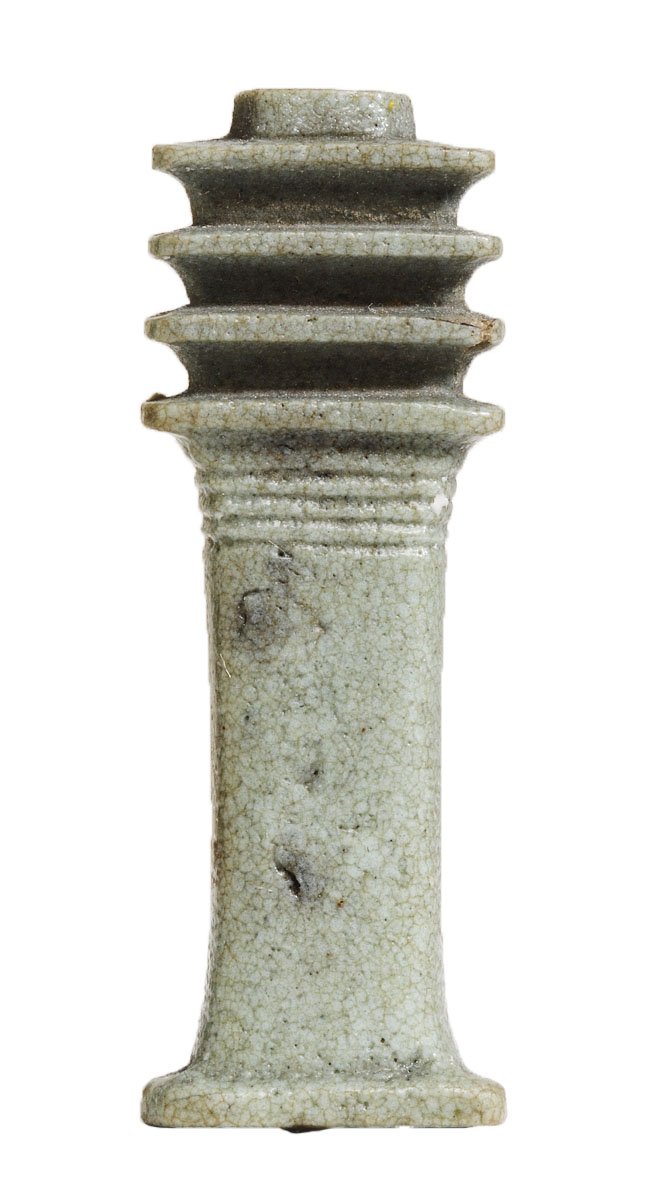
Djed-column Amulet
Egyptian Art
| Place of production | Egypt |
|---|---|
| Date | 1st-2nd centuries A.D. |
| Object type | sculpture |
| Medium, technique | Terracotta |
| Dimensions | 15.6 x 8.1 x 3.6 cm |
| Inventory number | 85.2-E |
| Collection | Egyptian Art |
| On view | Museum of Fine Arts, Basement Floor, Ancient Egypt, Daily life |
The god Bes is one of the most characteristic and unique figures of the Egyptian pantheon. His figure appeared for the first time during the Middle Kingdom on the objects of protective magic, designed for pregnant women and newborn children, but the characteristic iconography of the god was established in the New Kingdom. From the Eighteenth Dynasty onwards, Bes appears in a frontal view with a nude dwarf-like body, bandy-legs, a grotesque, mask-like face with protruding tongue, lion’s mane and ears, and a plume headdress.
The terracotta Bes relief is the artifact of the coroplastic production of the Graeco-Roman Period. Although displaying the typical posture and some of the common features of the god as the now-broken plume headdress, it reflects the influence of classical art. The face is not so lion-like any more, but rather human and the tongue does not protrude. According to parallels the relief can be dated between the first and second centuries AD. It may have been used as a protective amulet.
This record is subject to revision due to ongoing research.